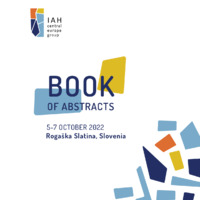Hydrochemical indicators of groundwater flow in the area of “Čukaru Peki” Cu-Au underground mine in eastern Serbia
Објеката
- Тип
- Саопштење са скупа штампано у изводу
- Верзија рада
- објављена
- Језик
- енглески
- Креатор
- Nebojša Atanacković, Vladimir Živanović, Jana Štrbački, Veselin Dragišić, Ivana Cvejić
- Извор
- 5th IAH CEG conference
- Уредник
- Mihael Brenčič, Petra Žvab Rožič, Anja Torkar
- Издавач
- Slovenian Committee of International Association of Hydrogeologists - SKIAH
- Датум издавања
- 2022
- Сажетак
-
The physical and chemical properties of groundwater, together with the groundwater levels regime and rock hydraulic properties, are often used to understand and conceptualize the hydrogeological system. Prediction of the influence of mining works on groundwater, and vice versa, is a challenge due to significantly altered groundwater flow patterns in the raw materials exploitation areas in relation to natural conditions. Therefore, multiple parameters are assessed and monitored before and during exploitation to properly characterize and quantify the system for assessing groundwater inflows-dewatering needs, environmental impacts, and water balance. In the present study, a set of 200 groundwater quality analyses are used to determine the main water types and delineate characteristic parameters for tracing the groundwater origin and flow in the area of the Čukaru Peki mine.
The ”Čukaru Peki” is a world-class copper and gold deposit discovered in 2012 in the vicinity of the “Bor” mining complex in eastern Serbia. The deposit consists of two major zones, the Upper massive sulphide zone and the Lower porphyry zone, at the depths from 400 to more than 2300 m below ground surface. The ore bodies are hosted in the Upper Cretaceous (UC) andesite and volcanoclastic, overlain by the UC and Miocene age clastic cover, with multiple faults identified in the area. The exploitation began in 2021, following the development of the main ore access infrastructure (twin decline and two shafts). The groundwater samples were collected before commencement and during the exploitation. The samples from UC and Miocene clastic sediments are pH neutral, low mineralization, Ca2+-HCO3- water. Samples from the volcanic rocks show considerable variations depending on the location and depth of sampling.
Evolution in chemical composition from Ca2+-Mg2+-HCO3-SO42- type in “fresh” andesite toward Na+-SO42--HCO3 – water in altered andesite is identified. Further analysis included the application of multivariant statistical methods (namely Hierarchical Cluster Analysis and Discriminant Analysis) to delineate characteristic parameters and grouping of the samples. Ultimately, distinguished parameters are used for determining the origin of groundwater collected from underground adits and shafts.
The research demonstrated the application of statistical methods to a set of groundwater quality parameters for tracing the origin of inflows into underground mining works. - почетак странице
- 14
- isbn
- 978-961-95960-0-5
- Просторно покривање
- Bor, Srbija
- Subject
- mine water, hydrogeology, multivariant statistics, groundwater inflow, water quality
- COBISS број
- 123685123
- Шира категорија рада
- М30
- Ужа категорија рада
- М34
- Права
- Отворени приступ
- Лиценца
- Creative Commons – Attribution 4.0 International
- Формат
- Скупови објеката
- Веселин Драгишић
- Владимир Живановић
- Јана Штрбачки
- Небојша Атанацковић
- Radovi istraživača
Nebojša Atanacković, Vladimir Živanović, Jana Štrbački, Veselin Dragišić, Ivana Cvejić. "Hydrochemical indicators of groundwater flow in the area of “Čukaru Peki” Cu-Au underground mine in eastern Serbia" in 5th IAH CEG conference, Slovenian Committee of International Association of Hydrogeologists - SKIAH (2022) М34
This item was submitted on 16. децембар 2022. by [anonymous user] using the form “Рад у зборнику радова” on the site “Радови”: http://dr.rgf.bg.ac.rs/s/repo
Click here to view the collected data.
